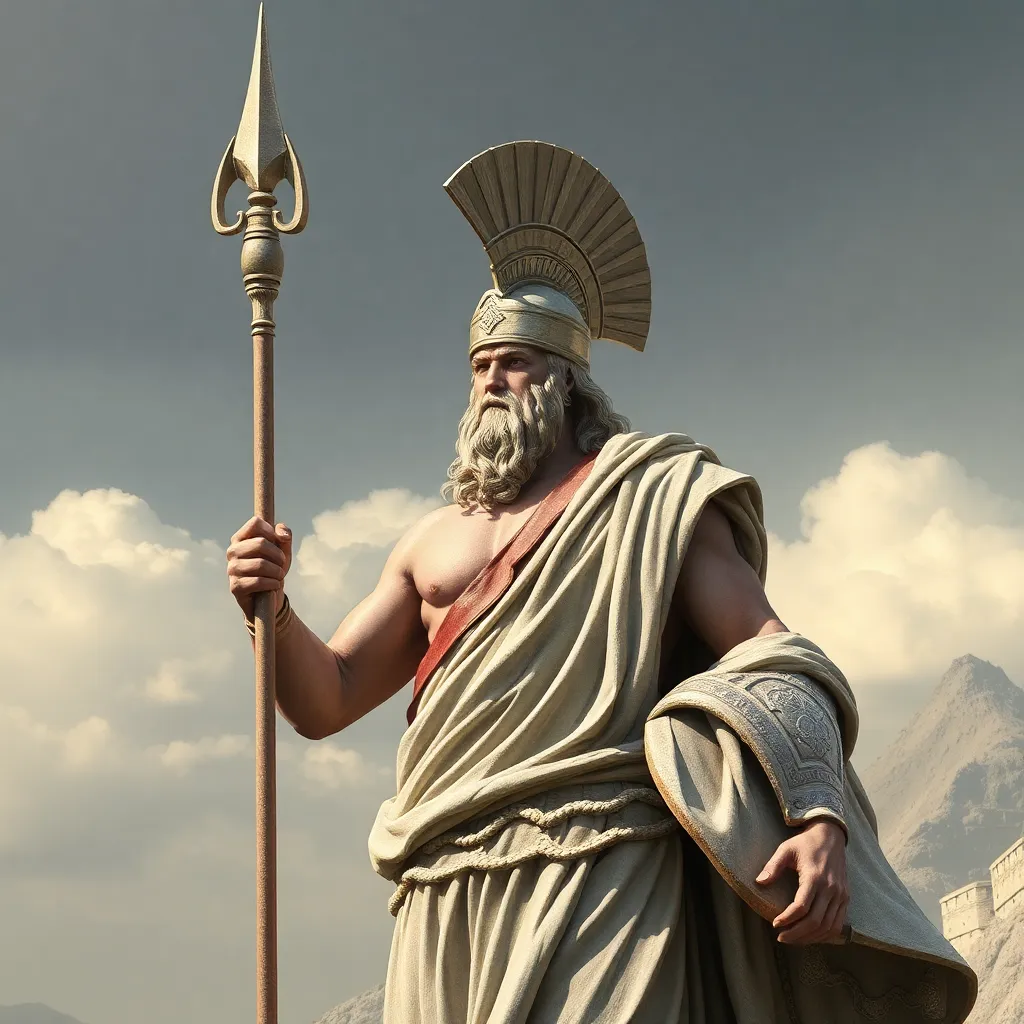The Importance of Ares in the Heroic Age of Greece
I. Introduction
The Heroic Age in Greece, often characterized by legendary tales of valor and conflict, served as a pivotal time in the development of Greek culture and identity. This era, filled with epic narratives and larger-than-life heroes, saw the emergence of numerous deities, with Ares standing out as the god of war. Ares, often portrayed as a fierce and relentless warrior, embodies the tumultuous spirit of battle and the complexities of human nature. This article explores the significance of Ares in shaping the values, culture, and narratives of the Heroic Age, highlighting his multifaceted role in Greek mythology.
II. Ares: The Divine Personification of War
Ares, one of the Twelve Olympians, is the divine personification of war. As the son of Zeus and Hera, his mythological origins are steeped in the themes of conflict and aggression. Ares is typically depicted as a muscular and aggressive figure, often clad in armor and wielding weapons. His attributes include:
- Helmet and shield
- Bloodstained spear
- Chariot pulled by fire-breathing horses
Unlike Athena, the goddess of wisdom and strategic warfare, Ares represents the chaotic and brutal aspects of war. While Athena symbolizes tactical skill and defense, Ares embodies raw power and the frenzy of battle. This contrast highlights the dual nature of warfare in Greek thought, where strategy and chaos coexist.
III. Cultural Perception of Ares in Greek Society
Ares was perceived in various ways in Greek society, often embodying the complex relationship between bravery and brutality. He was a symbol of:
- Bravery and valor: Ares was admired for his courage in battle and his relentless pursuit of victory.
- Fear and destruction: However, he also represented the horrors of war, including chaos and suffering.
This duality influenced Greek values and ideals of masculinity, where the warrior ethos was celebrated, but the consequences of unchecked aggression were also acknowledged. Greek heroes often sought to emulate Ares’ bravery while learning to temper it with wisdom and strategy, reflecting a more nuanced understanding of heroism.
IV. Ares in Epic Literature
Ares appears prominently in epic literature, particularly in Homer’s “Iliad” and “Odyssey.” In the “Iliad,” Ares is depicted as a force of destruction, engaging in direct combat and influencing the outcomes of battles. His interactions with heroes and gods reveal his role in advancing plot and character development. For instance:
- In the “Iliad,” Ares fights alongside the Trojans, showcasing his favoritism towards certain factions.
- His rivalry with Athena illustrates the conflict between chaotic warfare and strategic military prowess.
Through these narratives, Ares emerges not just as a participant in battles, but as a catalyst for the epic’s exploration of fate, honor, and the human condition.
V. Ares and the Concept of Heroism
The relationship between Ares and Greek heroes is complex. While Ares inspires acts of bravery, he also embodies the darker aspects of heroism, such as violence and bloodshed. His presence often serves as a catalyst for heroic deeds and conflicts, pushing characters to confront their own limits and dilemmas. The impact of Ares on the moral and ethical dimensions of heroism can be seen in several ways:
- Heroes are often faced with choices that reflect the tension between honor and brutality.
- Ares’ influence leads to moments of both triumph and tragedy in their journeys.
This dynamic encourages a deeper understanding of heroism, emphasizing that true valor is not merely about physical prowess but also about the moral choices made in the face of conflict.
VI. Worship and Cult of Ares in Ancient Greece
The worship of Ares varied throughout ancient Greece, with temples and rituals dedicated to his honor. Major aspects include:
- Temples: Ares had fewer temples compared to other gods, reflecting his controversial nature.
- Rituals: Blood sacrifices and offerings were common, as worshippers sought Ares’ favor in battle.
- Festivals: Festivals such as the Areopagus were held to celebrate Ares and invoke his strength.
Over time, Ares’ worship evolved, mirroring the changing perceptions of war and heroism in Greek society. His significance fluctuated, reflecting both admiration and caution regarding the nature of conflict.
VII. Ares in Art and Iconography
Ares was a popular subject in ancient Greek art, appearing in various forms ranging from pottery to sculptures. Notable representations include:
- Sculptures: Statues depicting Ares often showcase him in battle gear, emphasizing his martial attributes.
- Pottery: Vases frequently illustrated scenes of Ares in combat, highlighting the cultural reverence for valor.
- Murals: Frescoes depicted Ares in both heroic and destructive contexts, reflecting the duality of his nature.
The imagery of Ares played a significant role in shaping societal perceptions of war, reinforcing the notion that while warfare is inherently destructive, it is also a source of glory and honor.
VIII. Conclusion
Ares’ multifaceted role in the Heroic Age of Greece illustrates the complexity of war and heroism in ancient Greek culture. As a symbol of both valor and destruction, he reflects the values and ideals that defined this era. Ares’ lasting legacy can be seen not only in Greek mythology but also in contemporary discussions about the nature of conflict and heroism. Understanding Ares in the context of ancient Greek history provides valuable insights into the cultural narratives that continue to resonate in modern society.




